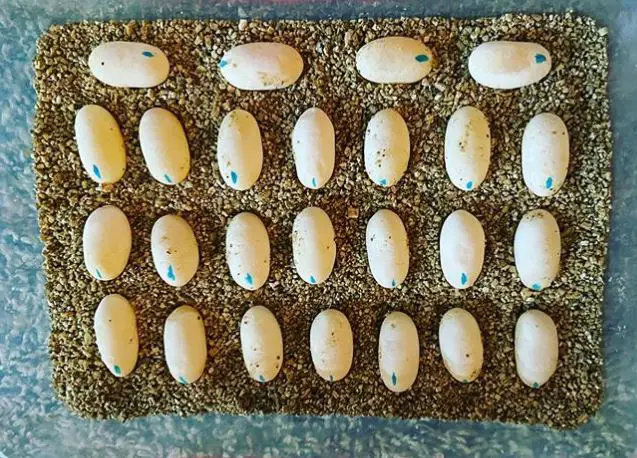What to do with unfertilized bearded dragon eggs
Brief Overview of Bearded Dragons and Their Reproductive Process
What to do with unfertilized bearded dragon eggs: Bearded dragons, scientifically known as Pogona, are fascinating reptiles that have captured the hearts of many reptile enthusiasts worldwide. These diurnal lizards are native to the arid regions of Australia and are widely kept as pets due to their docile nature and striking appearance.
Understanding their reproductive process is fundamental when discussing the significance of these eggs. Bearded dragons, like most reptiles, have a unique reproductive cycle that relies on both internal and external factors.
As oviparous creatures, meaning they lay eggs externally, bearded dragons engage in courtship rituals followed by copulation during their breeding season. Male bearded dragons become more territorial and display aggressive behaviors in order to attract receptive females.
Explanation of Unfertilized Bearded Dragon Eggs and Their Significance
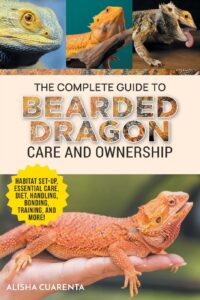 Unfertilized bearded dragon eggs refer to those laid by a female without having been successfully fertilized by a male counterpart during the mating process. These eggs do not contain developing embryos and therefore cannot hatch into baby dragons. While this occurrence may seem disappointing or confusing at first glance, it holds significant biological importance.
Unfertilized bearded dragon eggs refer to those laid by a female without having been successfully fertilized by a male counterpart during the mating process. These eggs do not contain developing embryos and therefore cannot hatch into baby dragons. While this occurrence may seem disappointing or confusing at first glance, it holds significant biological importance.
These eggs serve as an indicator that the female’s reproductive system is fully functional. The production of these eggs demonstrates that the female is capable of ovulating and laying fertile eggs when conditions for successful fertilization are met.
Furthermore, these unfertilized eggs can also provide valuable insights into the overall health and fertility status of both individual females and captive populations as a whole. Understanding why unfertilized bearded dragon eggs occur is crucial in ensuring optimal care for these remarkable creatures.
Whether it is due to the lack of male presence during mating season or potential infertility issues in either partner, recognizing these factors allows keepers and breeders to better manage their dragon’s reproductive needs. By observing and interpreting the occurrence of unfertilized eggs, we can make informed decisions regarding their future handling and potential repurposing.
Understanding Unfertilized Bearded Dragon Eggs
Definition and Characteristics of Unfertilized Eggs
Unfertilized bearded dragon eggs are essentially eggs that have not been fertilized by a male dragon’s sperm. These eggs possess distinct characteristics that differentiate them from fertile ones. Visually, unfertilized eggs tend to have a slightly different coloration, often appearing more opaque or translucent compared to their fertilized counterparts.
Their texture may also differ; unfertilized eggs can have a softer or less firm shell compared to fertile ones. Furthermore, when observed through candling—a technique where a bright light is shone against the egg—the lack of any visible embryo development confirms that the egg is unfertilized.
The absence of any blood vessels or darkening within the egg during candling is indicative of it being infertile. It is crucial to understand these defining characteristics in order to properly discern and handle unfertilized bearded dragon eggs.
Reasons for the Occurrence of Unfertilized Eggs in Bearded Dragons
The occurrence of unfertilized eggs in female bearded dragons can stem from various factors, primarily revolving around the lack of successful mating or reproductive abnormalities: 1. Lack of a Male Counterpart During Mating Season: When female dragons do not have access to a suitable male partner during their reproductive cycle, they will still lay eggs but they will remain infertile.
This situation commonly occurs in solitary pet dragons kept without any breeding intentions. 2. Infertility Issues or Reproductive Abnormalities in the Female Dragon: Some female bearded dragons may experience infertility due to underlying health issues or reproductive abnormalities such as hormonal imbalances, genetic factors, or age-related complications.
In such cases, even if mating occurs with a male counterpart, there is a higher probability that the resulting eggs will be infertile. It is important for bearded dragon owners and breeders to understand these reasons to ensure the welfare of their dragons and to take appropriate measures when handling unfertilized eggs.
Lack of a Male Counterpart During Mating Season
During the mating season, female bearded dragons release eggs regardless of whether they have successfully bred with a male. This phenomenon, known as unfertilized oviposition or pseudocopulation, is a natural process that allows female dragons to lay eggs even without fertilization.
The instinctual behavior of laying eggs helps females maintain reproductive health and prevent complications such as egg binding. In the absence of a suitable male counterpart, female bearded dragons may still exhibit nesting behaviors and lay infertile eggs.
This instinctual behavior occurs regardless of whether they have physically encountered a male during the mating season. It is essential to provide proper nesting materials and conditions for these egg-laying events to facilitate the natural behavior patterns exhibited by female bearded dragons during their reproductive cycle.
Proper Handling and Disposal Options for Unfertilized Eggs
Identifying unfertilized eggs from fertile ones
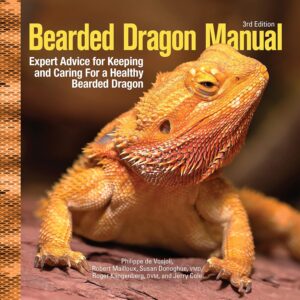 When confronted with a clutch of bearded dragon eggs, it is crucial to distinguish between fertilized and unfertilized ones. Visual inspection plays a significant role here. Unfertilized eggs tend to have distinct characteristics that differentiate them from their fertile counterparts.
When confronted with a clutch of bearded dragon eggs, it is crucial to distinguish between fertilized and unfertilized ones. Visual inspection plays a significant role here. Unfertilized eggs tend to have distinct characteristics that differentiate them from their fertile counterparts.
By carefully examining the eggs’ color, texture, and shape, one can discern whether an egg holds the potential for life or not. Unfertilized bearded dragon eggs usually exhibit a pale white or yellowish coloration compared to fertile eggs, which tend to boast a more vibrant hue.
Their texture may also display slight differences – while fertile eggs possess a slightly leathery feel due to their developing embryos inside, unfertilized eggs often feel more rigid and inflexible when gently squeezed. Furthermore, the shape of unfertilized eggs might appear slightly irregular or asymmetrical, lacking the well-defined ovoid form common in healthy fertilized ones.
Candling technique to observe internal development
To further aid in identifying unfertilized bearded dragon eggs accurately, enthusiasts often employ the candling technique—derived from the traditional practice of holding an egg against a candle flame—to observe internal developments within the eggshell. By placing an egg against a bright light source such as a flashlight or candling device, one can scrutinize its interior for any signs of embryo growth. During candling, fertile bearded dragon eggs reveal intricate networks of blood vessels forming as tiny red lines across the translucent shell when viewed against light.
These vessels indicate active embryonic development. In contrast, unfertilized bearded dragon eggs appear clear with no visible signs of vascular structures or any discernible life within them.
Ethical considerations when deciding what to do with unfertilized eggs
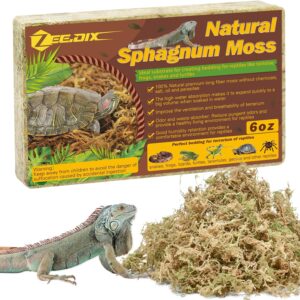 When faced with unfertilized bearded dragon eggs, ethical considerations come into play when determining the best course of action. Respecting the natural reproductive cycle becomes paramount.
When faced with unfertilized bearded dragon eggs, ethical considerations come into play when determining the best course of action. Respecting the natural reproductive cycle becomes paramount.
Bearded dragons, like many creatures, follow a biological instinct to reproduce. While unfertilized eggs may not result in offspring, they still represent an important component of a female dragon’s reproductive process.
To ensure the well-being and minimize stress on the female dragon, it is crucial to handle her clutch of unfertilized eggs with care and consideration. Avoiding unnecessary harm or stress to the mother includes refraining from interfering with her brooding behavior or forcibly removing any eggs she may be incubating.
Instead, providing her with a comfortable environment during this period allows her to complete the natural process at her own pace while respecting her instincts. By following these guidelines for proper handling and considering ethical implications, one can navigate through decisions regarding unfertilized bearded dragon eggs responsibly and with respect for both the dragons and their natural reproductive cycle.
Beneficial Uses for Unfertilized Bearded Dragon Eggs
Nutritional value as a food source for other animals
Unfertilized bearded dragon eggs, although not suitable for hatching, possess significant nutritional value that can benefit other animals in various ways. In the wild, reptiles such as snakes and monitors often consume eggs as part of their diet.
Unfertilized bearded dragon eggs provide a rich source of protein and nutrients, which helps these predators maintain their health and energy levels. In captivity, where providing a balanced diet to reptiles can be challenging, offering unfertilized bearded dragon eggs as a food source can contribute to their overall well-being.
Alternative protein source for birds or small mammals in captivity
Unfertilized bearded dragon eggs can also serve as an alternative protein source for birds and small mammals held in captivity. Many species of birds require a high-protein diet to support their growth and development, especially during breeding seasons when they have increased energy demands.
Similarly, small mammals like hedgehogs or sugar gliders thrive on diets rich in protein. Feeding them unfertilized bearded dragon eggs provides an excellent natural protein supplement that helps meet their dietary requirements.
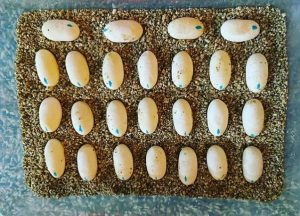
Utilization in educational settings or scientific research
Unfertilized bearded dragon eggs offer exceptional opportunities for educational settings and scientific research endeavors. In the field of embryology studies or comparative anatomy research projects, these eggs present an invaluable resource for studying the early stages of embryonic development without compromising live embryos.
By carefully dissecting the unfertilized eggs at different time points during incubation, researchers gain insights into the fascinating process of egg formation and internal organ development. Furthermore, unfertilized bearded dragon eggs can also play a crucial role in educational demonstrations regarding egg development and hatching processes.
In classrooms or zoological institutions, teachers and educators can utilize these eggs to explain the intricate stages of embryo development, showcasing how reptilian offspring gradually evolve within their protective shells. Additionally, students can witness firsthand the differences between fertilized and unfertilized eggs, fostering a deeper understanding of reproductive biology.
Unfertilized bearded dragon eggs hold great value beyond their ability to hatch into baby dragons. They can serve as a nutritious food source for other animals like reptiles, birds, and small mammals in captivity.
Moreover, these eggs find application in educational settings by providing valuable resources for scientific research as well as engaging demonstrations on egg development and hatching processes. Embracing the multifaceted potential of unfertilized bearded dragon eggs not only enriches animal health and nutrition but also enhances educational experiences for both students and researchers alike.
Creative Ideas for Repurposing Unfertilized Bearded Dragon Eggs
Crafting projects using empty eggshells
Bearded dragon eggs which are can be transformed into unique and visually appealing decorative ornaments or jewelry pieces. Once the eggshell is carefully emptied, it can be washed and dried thoroughly. Then, various techniques can be employed to enhance its appearance.
For instance, you could paint intricate designs on the shell using non-toxic acrylic paints or create a mosaic effect by gluing small gemstones or glass beads onto the surface. These beautifully crafted eggshell ornaments can be displayed in your home or gifted to reptile enthusiasts as a delightful conversation piece.
Educational
Unfertilized bearded dragon eggs also present an opportunity for educational purposes. They can serve as excellent teaching tools in classrooms, nature centers, or even home-school environments.
Teachers and educators can illustrate the concepts of embryology and life cycles by showcasing unfertilized eggs at different stages of development alongside fertile eggs. This hands-on experience provides valuable insights into the reproductive processes of reptiles while fostering curiosity and engaging students’ scientific inquiry skills.
To Sum Up What to do with unfertilized bearded dragon eggs
While unfertilized bearded dragon eggs may not fulfill their intended purpose of hatching baby dragons, they still hold value beyond their reproductive potential. These discarded eggs can find new life through creative endeavors such as crafting projects and educational displays.
By repurposing these eggs, we honor nature’s intricate processes while offering opportunities for artistic expression and learning experiences. Let us embrace the potential beauty within bearded dragon eggs and appreciate their contribution to our lives in alternative ways.
Further Reading:
- Carolina Custom Cages Terrarium Review
- 8 Best Basking Rocks for Beardie: What Is the Best Choice?
- 10 Best Thermometers for Beardie: How to Choose the Best One?
- 5 Best Beardie Lighting Setups for Beardie Lovers
- 9 Best Heat Lamps for Beardie: Natural Habitat Provided

